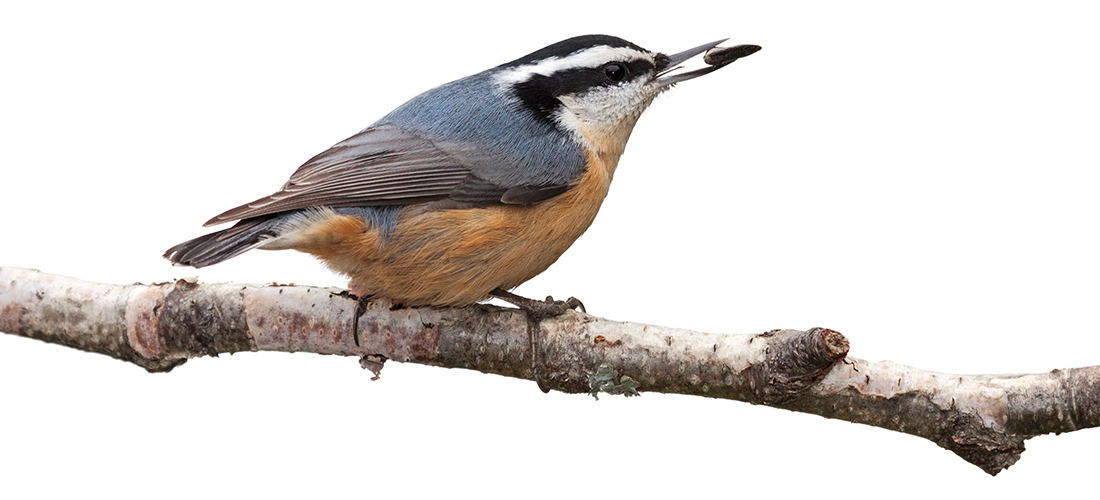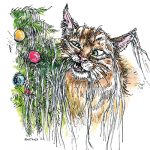
Winter Visitors
You’ll know this clever nuthatch by its color and its call
By Susan Campbell
Every few winters, an irruption of wintering finches wings its way to the Southeast. This is definitely shaping up to be one of those years. Thousands of songbirds native to the far north, such as pine siskins and purple finches, are already pouring in, looking for food all over North Carolina.
The first waves were observed in late September, signaling that there’s already a dearth of red spruce, balsam fir, Eastern hemlock and other small, oily and protein-rich native seeds across the northern tier of states. These birds will move farther and farther south in coming months. Some, such as the red-breasted nuthatch, have their breeding grounds way up in the boreal forests of Canada. Although pairs can also be found in northwestern North Carolina at altitudes of upwards of 3,000 feet year round, some nuthatches may cease their quest southward when they happen upon a well-stocked birdfeeder. If it’s your feeder, don’t be surprised if they take up residence in your yard for the duration of the season. And are they ever entertaining for the lucky hosts!
The red-breasted nuthatch is closely related to our resident brown-headed and white-breasted nuthatches with which many of us are so familiar. They defend their nest cavity fiercely from other birds as well as climbing predators. They have also been documented using resin and pieces of bark around the nest entrance for protection. Such skillful tool usage is remarkable, so it’s no surprise that red-breasted nuthatches can be very successful breeders. However, if the weather is good and food is abundant in summer, they can easily outstrip the local mast crop by late summer.
These animated little birds have a gray back, a prominent eye stripe and rusty flanks as well as a reddish breast, as their name implies. Red-breasteds are also quite vocal, calling repeatedly a distinctively nasal “yank yank” that sounds like a tiny tin horn being blown from the treetops. Both sexes will call, but unmated males are the most vocal. They give a very definite warning of their presence — even to larger birds, which they are not afraid to challenge for food.
Red-breasted nuthatches spend their time crawling over the branches of pine trees looking for seeds in cones as well as insects active in the needles and outer bark. Stock your birdfeeder with sunflower seeds, which they love. With their long, wedge-shaped bills, they can readily shell and gobble down black-oil sunflower seeds or they store them in a crevice for later. These little birds also love peanuts and suet. Individuals can be quite aggressive, driving other nuthatches away with strong body language and harsh vocalizations.
In the Sandhills and Piedmont, where we have such good nuthatch habitat, you can find them almost anywhere in a good winter. The best way to locate a red-breasted is to slowly walk through a pine stand and listen. They rarely resist giving themselves away. But in the absence of repeated, nasally calls, scan nearby chickadee or titmouse flocks. These northern visitors are known to frequently associate with other small-bodied seedeaters. If you spend just a little time in the woods over the coming weeks, chances are you’ll spot some of these clever winter visitors! PS
Susan would love to receive your wildlife observations and/or photos at susan@ncaves.com.





